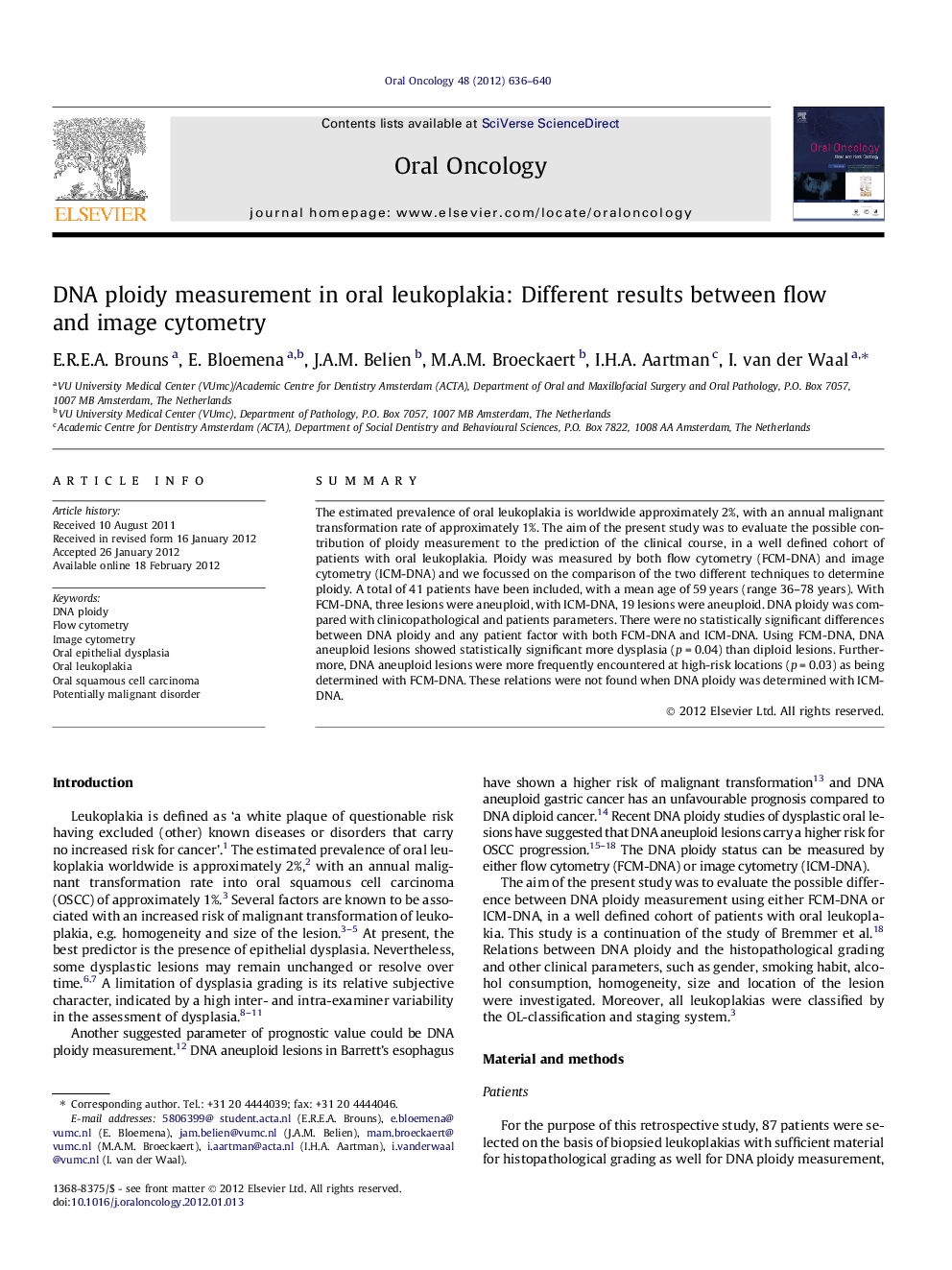| Article ID | Journal | Published Year | Pages | File Type |
|---|---|---|---|---|
| 6055370 | Oral Oncology | 2012 | 5 Pages |
Abstract
The estimated prevalence of oral leukoplakia is worldwide approximately 2%, with an annual malignant transformation rate of approximately 1%. The aim of the present study was to evaluate the possible contribution of ploidy measurement to the prediction of the clinical course, in a well defined cohort of patients with oral leukoplakia. Ploidy was measured by both flow cytometry (FCM-DNA) and image cytometry (ICM-DNA) and we focussed on the comparison of the two different techniques to determine ploidy. A total of 41 patients have been included, with a mean age of 59 years (range 36-78 years). With FCM-DNA, three lesions were aneuploid, with ICM-DNA, 19 lesions were aneuploid. DNA ploidy was compared with clinicopathological and patients parameters. There were no statistically significant differences between DNA ploidy and any patient factor with both FCM-DNA and ICM-DNA. Using FCM-DNA, DNA aneuploid lesions showed statistically significant more dysplasia (p = 0.04) than diploid lesions. Furthermore, DNA aneuploid lesions were more frequently encountered at high-risk locations (p = 0.03) as being determined with FCM-DNA. These relations were not found when DNA ploidy was determined with ICM-DNA.
Keywords
Related Topics
Health Sciences
Medicine and Dentistry
Dentistry, Oral Surgery and Medicine
Authors
E.R.E.A. Brouns, E. Bloemena, J.A.M. Belien, M.A.M. Broeckaert, I.H.A. Aartman, I. van der Waal,
